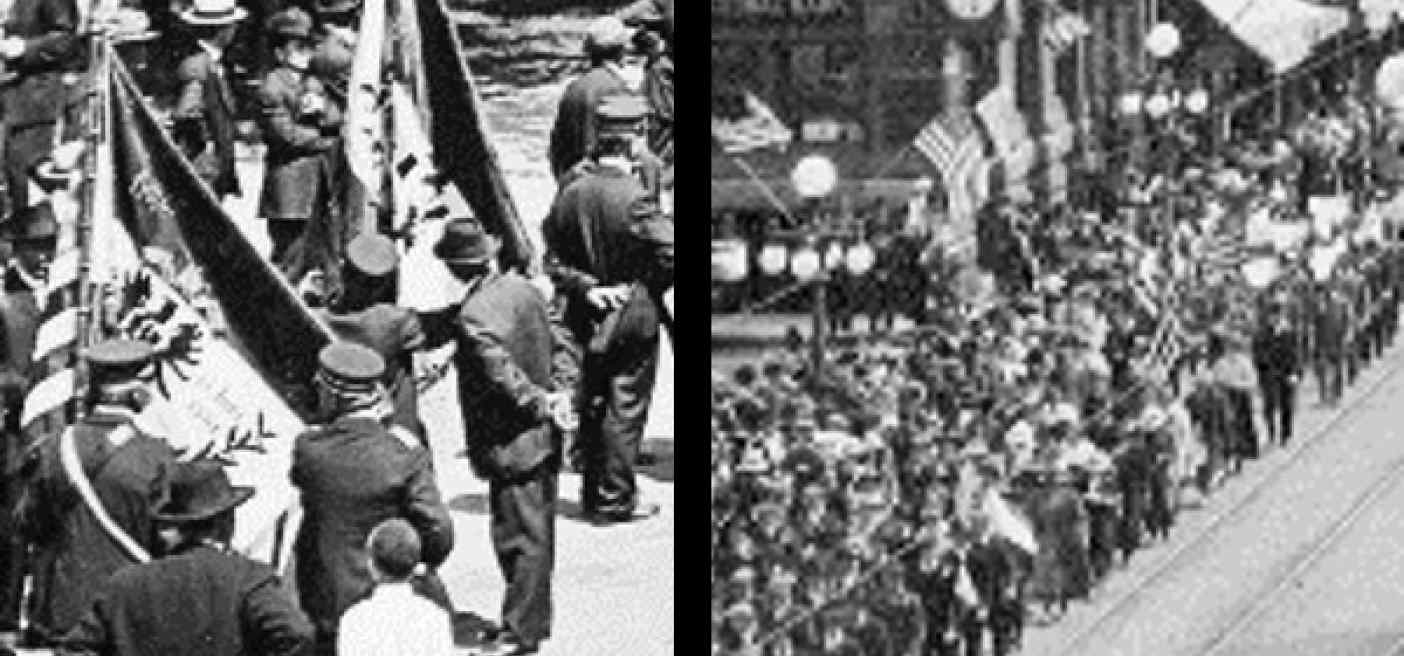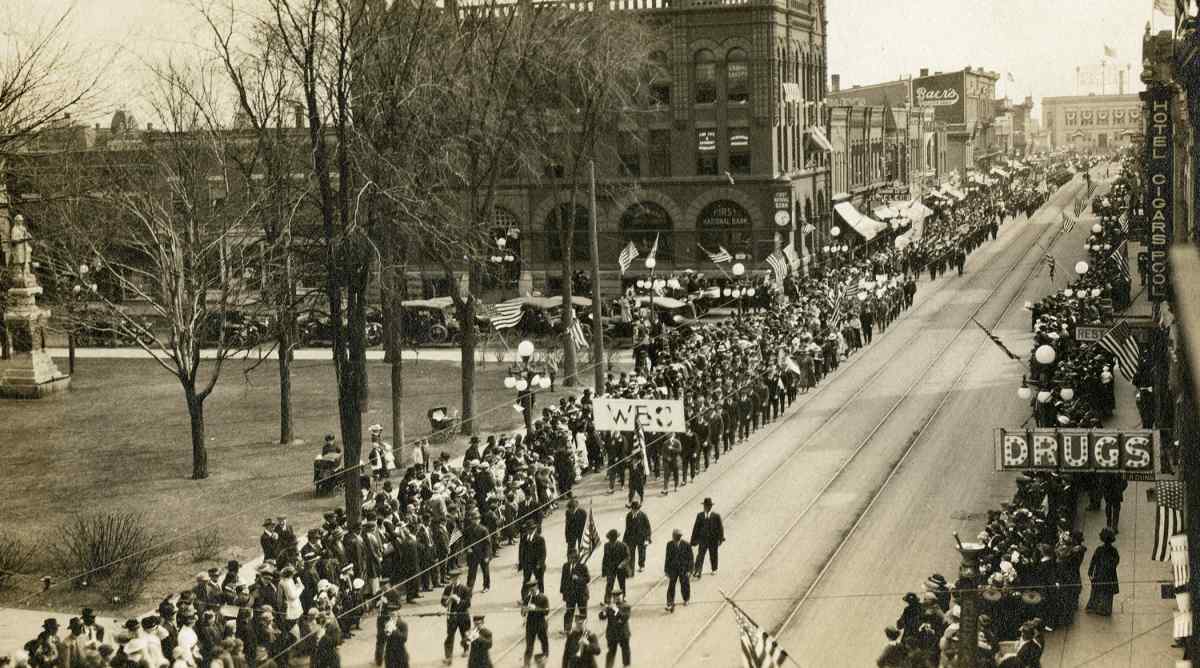Two Public Gatherings on Third Street

These two postcards from the MCHS collection show the change in public feeling on German-ness in the 1910s. In only six years, the political and social of the day led to a shift in attitudes towards the idea of being German in Marathon County.
"Hermanschlact Day" circa 1910
Much of Marathon County was settled by German-Americans at the end of the nineteenth century (whether immigrants themselves, or the children or grandchildren of immigrants) and many of the trappings of social and cultural life in the Wausau area were celebrated for their German origins.

This postcard was from either 1910 or 1911. It shows a crowd gathered on Third Street along the courthouse square. The postcard is labeled, "Gathering at the Court House, 'Hermanschlacht Day,' Wausau, Wisconsin."
Hermannschlacht Day (the Battle of Herman) is a celebration of the victory of the Germanic tribes (led by a general named Hermann) over the Roman Legions at the Battle of Teutorburg Forest in 9 AD. The battle is often marked as a turning point that stopped the expansion of the Roman Empire into Central Europe, and reestablsihed the Germanic tribes as a important force in the region.
In the 1800s, it was observed by Germans in a number of contexts. Hermannschlacht became a rallying point for the various German-speaking states against the foreign imperial ambitions of France and Austria. It became the setting for the emerging school of German Romanticism, such as the play by Heinrich von Kleist (1909) and Georg Vierling's musical rendition of Kleist's play (1866). And after Germany was unified in 1871, it reinforced the sense of Nationalism for the new German Empire.
Wausau's Hermanschlacht Club that organized these gatherings, is largely forgotten today. But they continued the tradition they brought with them from the Old World, to celebrate German-ness by calling back to a battle from nearly two millennia earlier.
"Preparedness Parade," circa 1916
After the First World War broke out in 1914, attitudes towards Europe were challenged in the United States. Over the subsequent months, as the war went on, the belief that the United States should stay out of the affairs of Europe was strained by events such as the attacks by German submarines on American shipping.

This postcard suggests that Wausau held a "preparedness parade" in 1916, which were popular across the United States at the time. It also shows Third Street, but from the opposite direction from the one above.
Better Be Safe Than Sorry.
The success of the "preparedness parades" that are being held in various parts of the country indicates what the people think of the proposition of being ready for possible troble. The people seem to believe it is better to be safe than sorry even though the safety costs something
-Stevens Point Journal, quoted by the Wausau Daily Herald, 10 June 1916
When the United States did enter the war in 1917, there was considerable scrutiny of the loyalty of anyone who was deemed German. Anyone who publicly criticized U.S. policy or made a joke at the expense of an American soldier could be arrested or be assaulted for spreading insurrectionist propaganda. A farmer might be publicly shamed by having his barn painted yellow if he did not buy his share of war bonds. And it was best not to speak German in public, least your neighbors suspect the worst of you.
When the preparedness parade movement caught on in places across the United States in 1916, that public scrutiny of anything German-ness had not yet become erupted into the violence and suppression of the war years. But the start of that anti-German sentiment was on display in the parades like this one in Wausau. Needless to say, there was no celebration of Hermanschlact Day in 1916, and they did not resume after the war was over.
